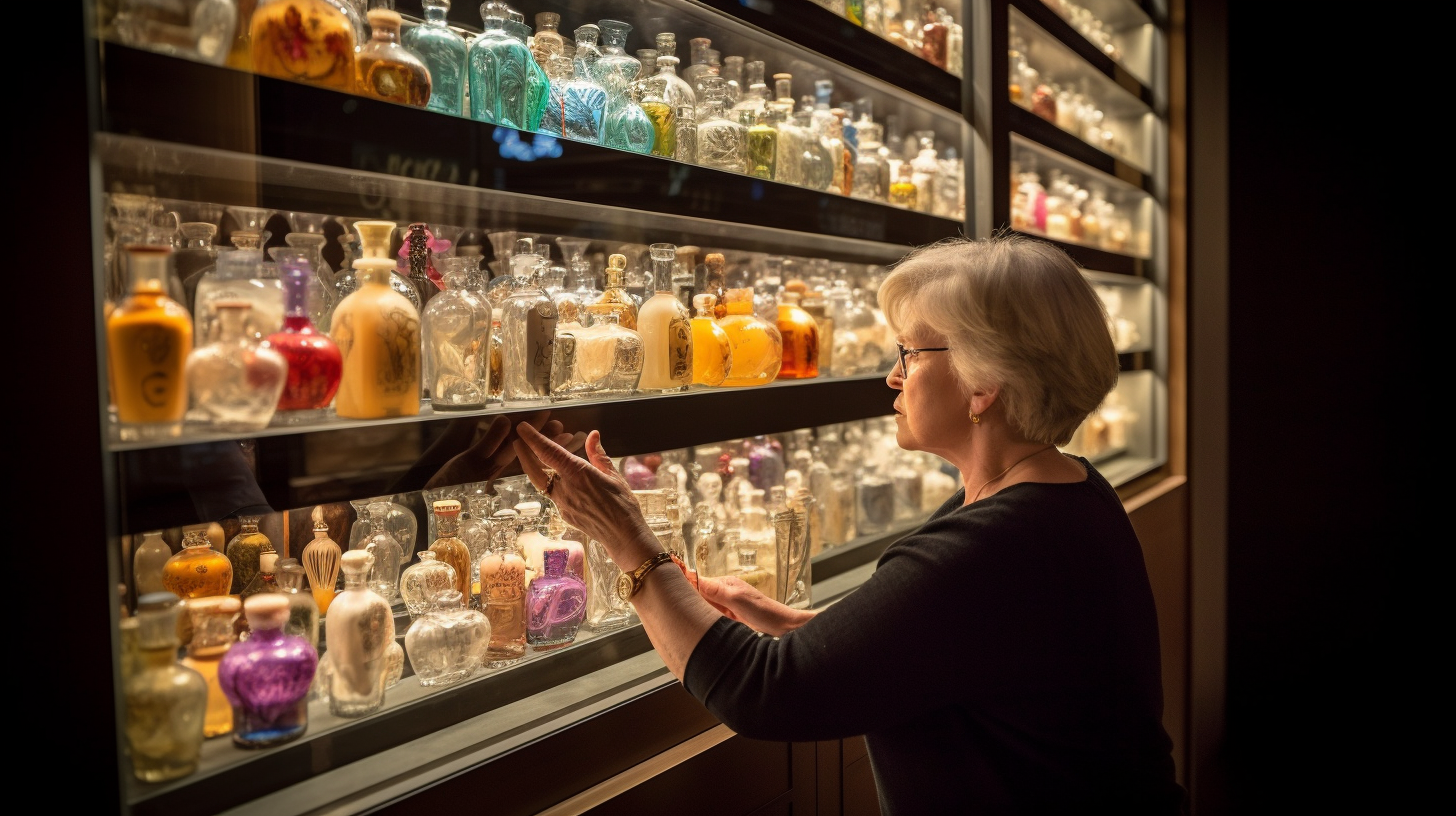How to Create Your Own Fragrance: A Comprehensive Guide
Welcome to our comprehensive guide on how to create your own fragrance! If you’ve ever wondered how perfumes are made or dreamed of crafting a scent that is uniquely yours, you’re in the right place. In this tutorial, we will take you through the step-by-step process of fragrance creation, from understanding the basics to blending your own signature scent. Whether you’re a DIY enthusiast, an artistic individual, or simply curious about the art of perfumery, this guide will empower you to embark on an exciting olfactory journey. So let’s dive in and unlock the secrets of fragrance making!
Understanding Fragrance Basics
Before we start creating our own fragrance, it’s essential to familiarize ourselves with some key concepts and terminology. Fragrances are composed of different ingredients that work together to create a specific scent profile. Let’s explore these ingredients:
Fragrance Notes
A fragrance note is a single aroma used in perfumery. These notes can be categorized into three main types: top notes, middle notes (also known as heart notes), and base notes.
- Top Notes: These are the first scents you smell when applying a fragrance. They are usually light and evaporate quickly.
- Middle Notes: The heart of a fragrance, these notes emerge after the top notes fade away. They provide body and character to the scent.
- Base Notes: These notes are long-lasting and form the foundation of the fragrance. They give depth and richness to the overall composition.
To create a well-balanced fragrance, it’s important to consider all three types of notes and how they interact with each other.
Fragrance Oils
Fragrance oils are concentrated mixtures of aromatic compounds. They are the primary ingredients used in perfume making and come in a wide variety of scents. When selecting fragrance oils, it’s crucial to choose high-quality oils that are specifically formulated for use in perfumery.
Fragrance Blending
Blending is the process of combining different fragrance notes and oils to create a harmonious scent. It allows you to customize your fragrance by experimenting with various combinations and proportions. Blending requires careful consideration of the characteristics and compatibility of each note to achieve the desired result.
Gathering Your Ingredients and Tools
Now that we have a solid understanding of fragrance basics, let’s gather the necessary ingredients and tools for our fragrance-making journey. Here’s what you’ll need:
- Fragrance Oils: Choose a selection of fragrance oils that resonate with your personal preferences. Aim for a variety of top, middle, and base notes to create a well-rounded scent.
- Dilution Medium: This can be alcohol (such as perfumer’s alcohol or vodka), carrier oils (like jojoba oil or sweet almond oil), or a combination of both.
- Glass Containers: Use glass containers to blend and store your fragrances. Glass is non-reactive and helps preserve the integrity of your creations.
- Droppers or Pipettes: These tools will help you measure precise amounts of fragrance oils during the blending process.
- Note Cards: Keep note cards handy to record your experiments, including the proportions and combinations you try.
- Mixing Sticks or Glass Rods: Use these tools to blend the fragrance oils and dilution medium together.
- Funnel: A funnel will make it easier to transfer your final fragrance into smaller bottles for storage or gifting.
Now that we have our ingredients and tools ready, let’s move on to the exciting part – creating our own fragrance!
The Fragrance-Making Process
Creating a fragrance is a creative and iterative process. As you experiment with different combinations and proportions, remember that there are no right or wrong answers. The goal is to discover scents that resonate with you personally. Here’s a step-by-step guide to help you get started:
Step 1: Plan Your Fragrance
Before diving into blending, take a moment to plan your fragrance. Consider the type of scent you want to create – floral, woody, citrusy, or something entirely unique. Visualize the emotions and memories you want your fragrance to evoke. This planning stage will serve as your guiding compass throughout the process.
Step 2: Start with Top Notes
Begin by selecting one or two top notes that capture your attention. These notes will provide the initial impression of your fragrance. Experiment with different combinations until you find a pairing that resonates with your vision. Remember, top notes tend to be light and fleeting, so don’t be afraid to be bold!
Step 3: Add Middle Notes
Once you’re satisfied with your top notes, it’s time to introduce middle notes into the mix. These notes will add depth and complexity to your fragrance. Consider how they interact with the top notes and adjust the proportions accordingly. Take note of any changes in the scent profile and make adjustments as needed.
Step 4: Incorporate Base Notes
Now it’s time to bring in the base notes that will anchor your fragrance. These notes provide longevity and a solid foundation. Experiment with different combinations of base notes, keeping in mind how they interact with the top and middle notes. This is where you can truly customize your fragrance and make it uniquely yours.
Step 5: Test and Refine
Once you’ve blended your fragrance, it’s important to test it on your skin. Apply a small amount to your wrist or inner arm and let it develop for a few hours. Take note of how the scent evolves over time – the initial impression, the dry-down, and its overall longevity. If necessary, go back to previous steps and refine your blend until you achieve your desired result.
Safety Precautions
While fragrance making is an enjoyable process, it’s essential to prioritize safety. Here are some safety precautions to keep in mind:
- Ventilation: Make sure you’re working in a well-ventilated area to avoid inhaling excessive fumes.
- Skin Sensitivity: Perform a patch test on a small area of skin before applying the fragrance all over your body.
- Dilution: Follow recommended guidelines for diluting fragrance oils to ensure safe usage.
- Cleanliness: Keep your workspace clean and free from any potential contaminants.
Celebrate Your Unique Fragrance!
Congratulations! You’ve successfully created your own fragrance. Embrace the joy of wearing a scent that is uniquely yours. Share your creation with friends and loved ones, and don’t be afraid to experiment further with different combinations and ingredients. Fragrance making is a journey of self-expression and creativity, so enjoy the process and let your olfactory imagination run wild!
We hope this comprehensive guide has inspired you to embark on your fragrance-making adventure. Remember, the art of perfumery is a blend of science, creativity, and personal expression. With practice and experimentation, you can create fragrances that captivate the senses and reflect your individuality. So go ahead, unleash your inner perfumer, and enjoy the wonderful world of fragrance creation!




